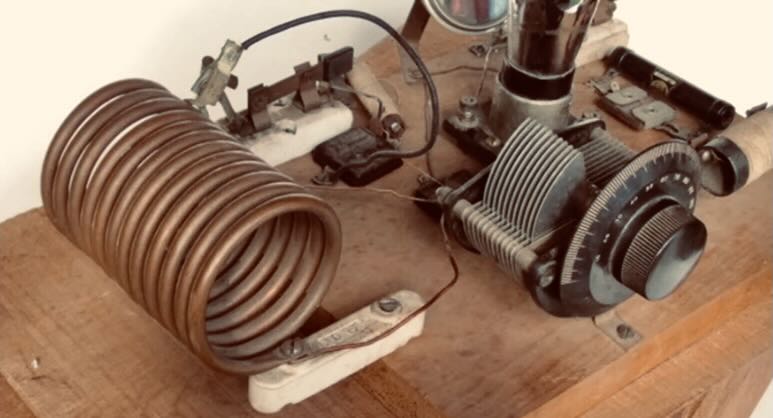 Many thanks to SWLing Post contributor, Mark (AE2EA), who writes:
Many thanks to SWLing Post contributor, Mark (AE2EA), who writes:
Hi Thomas,
FYI, The AWA just posted a presentation by Andy Flowers, K0SM, about amateur radio transmitters from the 1920s & early 30s. Andy is a builder of beautiful early transmitters, among other ham radio pursuits like 10GHz and up microwave work.
Here’s the latest blurb from the AWA:
If you were an amateur radio operator 100 years ago, and wanted a transmitter, you had one choice, you built a breadboard transmitter from scratch, often with components you made yourself. Today, some hams still do this, with designs from the early years of ham radio. AWA member Andy Flowers, K0SM, is one of those modern day vintage transmitter breadboarders.
Join Andy as he explains how early radio amateurs built their own breadboard transmitters with handmade parts, and put them on the air without killing themselves (well, most of the time.)
We also have an earlier piece about Andy here:
73, Mark ~AE2EA
Fascinating! Thank you for sharing this, Mark!

I don’t see homemade components. Well the coils were probably wound. But the capacitors, tubes, resistors and fixed capacitors look commercial.
In the thirties there was SSB , though few trying it. There was Lamb writing about bettersulerhet receivers, including a crystal filter for single signal recetion. Frank Jones had his supergainer, which was only simple compared to full superhets of the day. Towards the end of the decade, Hallicrafters released a monster receiver, it was a diversity receiver.
It was the depression. People had time, and no money. So that colors what happened. Some parts were likely less available, but if you had to use a pencil as an eraser, it was likely to save money. Or take a tube from the family radio. Most rigs were primitive, because of the cost of parts. Howard Armstrong patented the superhet receiver in 1918, so better was available, but not cheap.